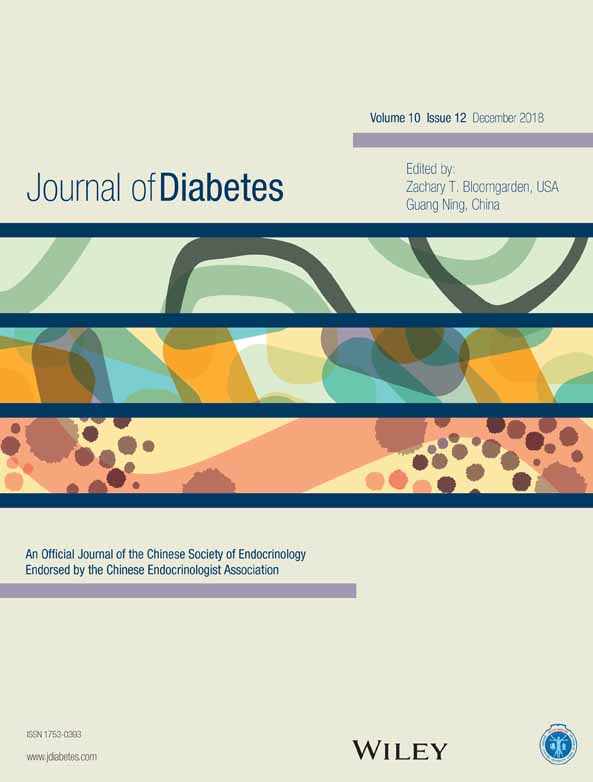Structured tool to improve clinical outcomes of type 2 diabetes mellitus patients: A randomized controlled trial†
改善2型糖尿病患者临床结果的结构化工具:一项随机对照试验
Abstract
enBackground
Reviewing pharmacist diabetes intervention studies revealed a lack of structured process in providing diabetes care, leading to varied results from increased to minimal improvements. The aim of this study was to determine the effectiveness of the Simpler tool, a structured clinical guidelines tool, in the delivery of diabetes care. The primary outcome was significant improvement in HbA1c. Secondary outcomes were improved lipid profiles and blood pressure (BP).
Methods
A 6-month parallel multicenter two-arm, single-blind randomized controlled trial involving 14 pharmacists at seven primary care clinics was conducted in Johor, Malaysia. Pharmacists without prior specialized diabetes training were trained to use the tool. Patients were randomized within each center to either Simpler care (SC), receiving care from pharmacists who used the tool (n =55), or usual care (UC), receiving usual care and dispensing services (n = 69).
Results
Compared with UC, SC significantly reduced HbA1c (mean reduction 1.59% [95% confidence interval {CI} −2.2, −0.9] vs 0.25% [95% CI −0.62, 0.11], respectively; P ≤ 0.001), and significantly improved systolic BP (−6.28 mmHg [95% CI −10.5, 2.0] vs 0.26 mmHg [95% CI −3.74, 0.43], respectively; P = 0.005). A significantly higher proportion of patients in the SC than UC arm reached the Malaysian guideline treatment goals for HbA1c (14.3% vs 1.5%; P = 0.020), systolic BP (80% vs 42%; P = 0.001), and low-density lipoprotein cholesterol (60.5% vs 40.4%; P = 0.046).
Conclusions
Using the Simpler tool facilitated the delivery of comprehensive evidence-based diabetes management and significantly improved clinical outcomes. The Simpler tool supported pharmacists in providing enhanced structured diabetes care.
Abstract
zh摘要
背景
回顾药剂师对糖尿病进行干预的研究后发现, 他们在提供糖尿病治疗时缺乏结构化流程, 因此导致了从明显改善到微小改善这些各不相同的结果。这项研究的目的是确定一种结构化的临床指南工具Simpler在进行糖尿病治疗中的效果。主要结果是HbA1c显著改善。次要结果是血脂谱与血压(BP)的改善。
方法
这是一项为期6个月的平行、多中心、双臂、单盲的随机对照试验, 纳入的14名药剂师来自于马来西亚柔佛市的7个基层保健诊所。训练那些既往没有专门受过糖尿病培训的药剂师使用该工具。在每一个中心按照随机化原则将患者分为Simpler治疗组(Simpler care, SC), 药剂师使用工具对这组患者进行治疗(n = 55);或者常规治疗组(usual care, UC), 患者接受药剂师的常规治疗与调剂服务(n = 69)。
结果
与UC组相比, SC组患者的HbA1c下降得更为显著(SC组平均下降了1.59% [95%置信区间{CI}为-2.2, -0.9], UC组平均下降了0.25% [95% CI为-0.62, 0.11];P ≤ 0.001), 并且收缩压的改善也更为显著(SC组为-6.28 mmHg [95% CI为−10.5, 2.0], UC组为0.26 mmHg [95% CI为-3.74, 0.43];P = 0.005)。与UC组相比, SC组有显著更多比例的患者达到了马来西亚指南中有关HbA1c(达标比例分别为14.3%与1.5%;P = 0.020)、收缩压(达标比例分别为80%与42%;P = 0.001)以及低密度脂蛋白胆固醇(达标比例分别为60.5%与40.4%;P = 0.046)的治疗目标。
结论
使用Simpler工具有助于全面改善基于循证医学的糖尿病管理并且可以显著改善临床结局。药剂师使用Simpler工具可以提高结构化糖尿病治疗的效果。




